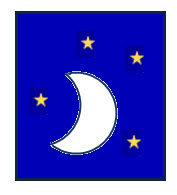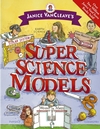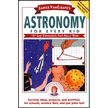 The Moon is the largest and brightest object in the night sky. It is also one of the most observed celestial body. Even so most children and adults have little knowledge about it. They know that the lighted part changes shapes and most know that it happens every month. But few know why.
The Moon is the largest and brightest object in the night sky. It is also one of the most observed celestial body. Even so most children and adults have little knowledge about it. They know that the lighted part changes shapes and most know that it happens every month. But few know why.
The Moon does not emit light on its own. Instead, the moonlight we see is actually light coming from the Sun that is reflected from the moon’s surface. The part of the Moon that is illuminated is the half that is facing the Sun. Each time the Moon moves around the Earth, the Moon turns once on its axis. Because of this, the same side of the Moon always faces Earth and this part is only fully illuminated once each month when it is on the opposite side of Earth from the Sun.
 Discover for Yourself the Phases of the Moon
Discover for Yourself the Phases of the Moon
Observing moon phases can be an ongoing project. Keep record of your observations.
1. Date and record the time for each observation.
2. Record the position of the Moon in the sky. This can be done using the horizon as a reference. You could draw an arc representing the Moon’s path across the southern sky (Northern Hemisphere) from the east horizon (left point) to the west horizon (right point).
3. Make your drawings so that they represent the phase of the Moon. Following are names and descriptions of different Moon phases.
![]() New Moon-the Sun, Moon, and Earth are lined up. Using a clock and a basket ball for a mental picture of their position, imagine the ball at one end of a table and the clock as the other. The ball is facing the number 12 on the clock. The center of the clock is the Earth and the Moon is located at 12. In this position, the side of the Moon facing the Sun is lit, but the side of the Moon facing Earth is dark.
New Moon-the Sun, Moon, and Earth are lined up. Using a clock and a basket ball for a mental picture of their position, imagine the ball at one end of a table and the clock as the other. The ball is facing the number 12 on the clock. The center of the clock is the Earth and the Moon is located at 12. In this position, the side of the Moon facing the Sun is lit, but the side of the Moon facing Earth is dark.
![]() Waxing Crescent-The Moon moves counterclockwise around the Earth. On our imaginary model, the Moon is at 10:30. In this position, part of the Moon’s side facing Earth also faces the Sun. Thus this part receives sunlight and is illuminated. In this phase, most of the Moon facing Earth is dark. Since the Moon is a sphere, the part illuminated is curved and has a crescent shape. Waxing is a term meaning to grow larger. In the Northern Hemisphere, when you see the crescent shape on the right side of the Moon, the moon phases are waxing. (In the Southern Hemisphere the waxing crescent is on the left side.)
Waxing Crescent-The Moon moves counterclockwise around the Earth. On our imaginary model, the Moon is at 10:30. In this position, part of the Moon’s side facing Earth also faces the Sun. Thus this part receives sunlight and is illuminated. In this phase, most of the Moon facing Earth is dark. Since the Moon is a sphere, the part illuminated is curved and has a crescent shape. Waxing is a term meaning to grow larger. In the Northern Hemisphere, when you see the crescent shape on the right side of the Moon, the moon phases are waxing. (In the Southern Hemisphere the waxing crescent is on the left side.)
![]() First Quarter-The Moon has moved to the o’clock position. Since its new moon position, the Moon has moved through one-fourth of its orbit around the Earth, thus the name of the phase, first quarter. The Sun’s rays illuminate half of the side of the Moon facing Earth. Again, in the Northern Hemisphere, if the right half is illuminated the Moon phases are waxing (growing).
First Quarter-The Moon has moved to the o’clock position. Since its new moon position, the Moon has moved through one-fourth of its orbit around the Earth, thus the name of the phase, first quarter. The Sun’s rays illuminate half of the side of the Moon facing Earth. Again, in the Northern Hemisphere, if the right half is illuminated the Moon phases are waxing (growing).
![]() Waxing Gibbous-The Moon is at around 7:30. Most of the Moon is lighted. There is only a small dark crescent shape left.
Waxing Gibbous-The Moon is at around 7:30. Most of the Moon is lighted. There is only a small dark crescent shape left.
![]() Full-The Sun, Earth, and Moon are lined up, with the Moon at 6 o’clock. In this position the entire side of the Moon facing Earth is illuminated.
Full-The Sun, Earth, and Moon are lined up, with the Moon at 6 o’clock. In this position the entire side of the Moon facing Earth is illuminated.
![]() Waning Gibbous-As the Moon continues is orbit around Earth, less of its side facing Earth is illuminated. Waning means to grow smaller. The Moon is now at 4:30 and is opposite where it was during its waxing gibbous stage. In the Northern Hemisphere, when the remaining lighted part of the Moon on on the left, the Moon is waning.
Waning Gibbous-As the Moon continues is orbit around Earth, less of its side facing Earth is illuminated. Waning means to grow smaller. The Moon is now at 4:30 and is opposite where it was during its waxing gibbous stage. In the Northern Hemisphere, when the remaining lighted part of the Moon on on the left, the Moon is waning.
![]() Last (Third) Quarter-The Moon is at 3 o’clock and opposite the position it was when at 9’oclock (first quarter). The lighted part of the Moon is also opposite–in this position the lighted part is on the left.
Last (Third) Quarter-The Moon is at 3 o’clock and opposite the position it was when at 9’oclock (first quarter). The lighted part of the Moon is also opposite–in this position the lighted part is on the left.
![]() Waning Crescent-The Moon is at 1:30 and only a crescent of the bright side shows, on the left edge closest to the sun. The rest of the moon facing Earth is dark.
Waning Crescent-The Moon is at 1:30 and only a crescent of the bright side shows, on the left edge closest to the sun. The rest of the moon facing Earth is dark.
 |
Astronomy for Every Kid: 101 Easy Experiment That Really Work |